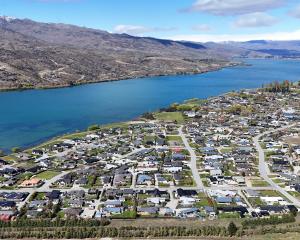Murals being painted on the Clyde Historical Museum give the public a taste of the many exhibitions housed in the building.
Curator Norma Richardson said the murals were being painted by Clyde artist John Joyce.
On the front right corner of the building, a mural portrays the view up Sunderland St during the era when thousands of miners rushed to the region after Hartley and Reilly struck gold on the Clutha river in 1862.
‘‘It's an ongoing project. There's still some finishing work to do on the mural and some sign writing,'' Mrs Richardson said.
‘‘It's not a photographic reproduction, it's just his [Joyce's] representation of the buildings at the time.''
On the front left corner Joyce has painted a Chinese miner. A stamper battery is likely to be added somewhere else on the building.
The museum moved into the building on Blyth St, Clyde, when Vincent County Council ceased using the building in 1989, as the borough councils had amalgamated to form Central Otago District Council.
The museum had been in the former courthouse next door.
Inside the chambers where Vincent County Council once met, chairs are still in place around a huge solid wood table. Exhibits include a photograph of Benjamin Naylor kept alongside a day book of those who bought goods from him.
Naylor was one of the first merchants to supply goods to miners, bringing a wagon of supplies to the Dunstan in 1862.
He lived in, and developed the Victoria Stores, where he ran a grocery and drapery business in the building now known as Olivers.
A room dedicated to the gold rush in the museum is one of many exhibits exploring Clyde's past. The Contact Energy room has information about the building of the Clyde Dam.
The Martin Brown model collection was built up over 10 years and donated to the library last year.
Mr Brown's father, Fred, owned the Briar Herb Factory and sold it to the museum after it ceased processing in 1977. Larger exhibits are now displayed there.
The historical museum and Herb Factory Museum in Clyde are run by a group of 17 volunteers.
‘‘We rely on the door takings and small grants and donations to keep us going,'' Mrs Richardson said.












